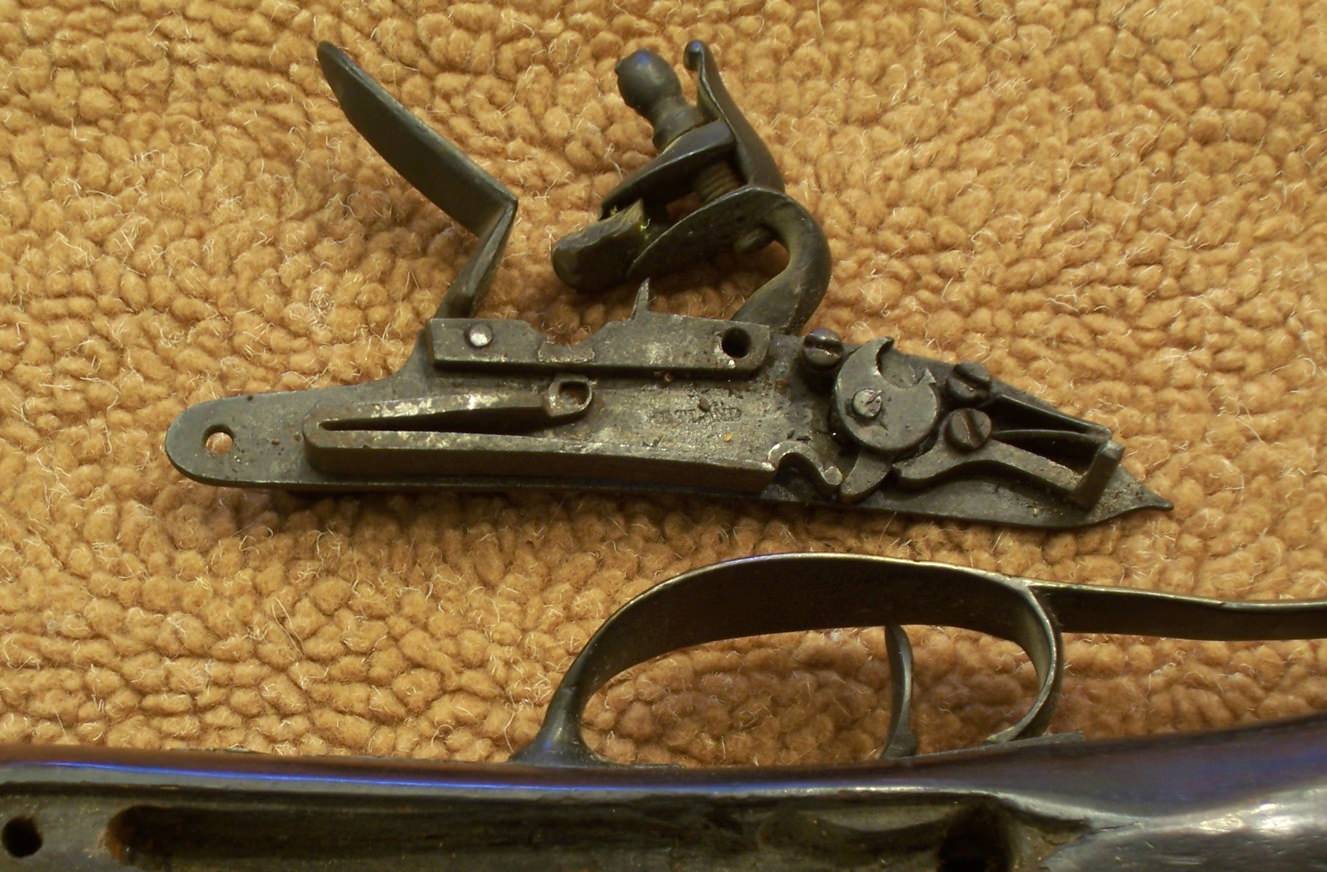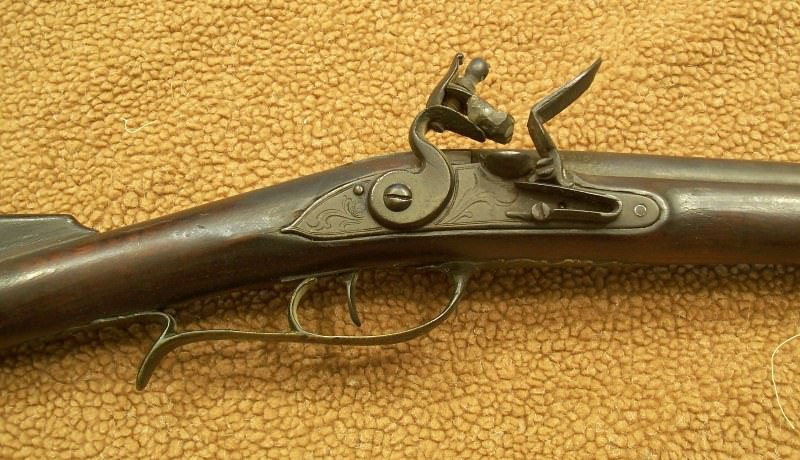timothy prouty
40 Cal.
- Joined
- Apr 2, 2016
- Messages
- 267
- Reaction score
- 0
It look like it's should have a Bridal because of the pin in the middle


Stophel said:This pic shamelessly stolen from the internet... somewhere, I don't recall.
I have seen photos of others like this, but the particular guns don't spring to mind. One might like for this lock to be around 1770's period, but it might not be. This may or may not be something that was completely passe' by the time that the trade rifles were being made, I don't know. English locks are NOT my specialty.


Enter your email address to join: